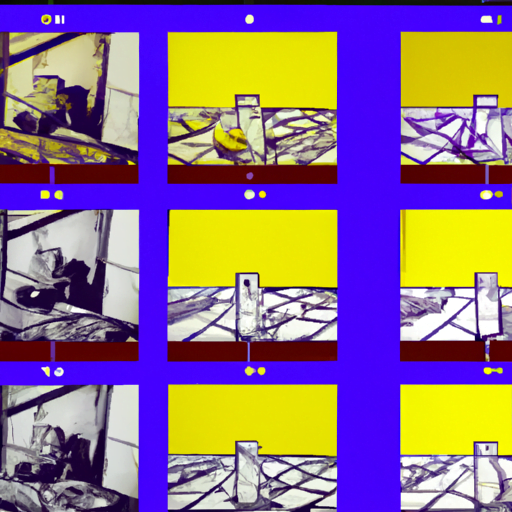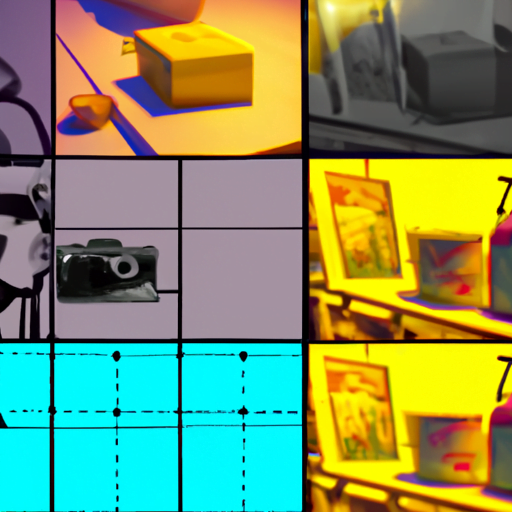
-
Table of Contents
The Role of Storyboarding in Visual Narratives

Visual narratives have become an integral part of various industries, including film, animation, advertising, and video game development. They allow creators to convey stories, ideas, and messages through a combination of visuals, text, and sound. One crucial tool that plays a significant role in the creation of visual narratives is storyboarding. In this article, we will explore the importance of storyboarding and how it contributes to the success of visual narratives.
What is Storyboarding?
Storyboarding is a visual planning technique that involves creating a sequence of drawings or illustrations to outline the key scenes, shots, and actions of a story. It serves as a blueprint for the final visual narrative, providing a visual representation of how the story will unfold. Storyboards typically include sketches, annotations, and notes that help guide the production process.
The Benefits of Storyboarding
Storyboarding offers several benefits that contribute to the overall success of visual narratives. Let’s explore some of the key advantages:
- Visualizing the Story: Storyboarding allows creators to visualize the story before production begins. It helps in determining the composition, framing, and pacing of each scene, ensuring that the narrative flows smoothly.
- Effective Communication: Storyboards serve as a visual communication tool between the creative team members. They help in conveying ideas, concepts, and visual styles, ensuring everyone is on the same page.
- Time and Cost Efficiency: By creating a storyboard, creators can identify potential issues or challenges early in the process. This allows for adjustments and revisions to be made before production begins, saving both time and money.
- Collaboration and Feedback: Storyboards facilitate collaboration among team members, such as directors, cinematographers, and designers. They provide a platform for feedback and discussion, leading to a more refined and cohesive visual narrative.
Case Studies: Successful Storyboarding in Visual Narratives
Let’s take a look at a few case studies that highlight the importance of storyboarding in the creation of successful visual narratives:
1. Pixar Animation Studios
Pixar Animation Studios is renowned for its visually stunning and emotionally engaging animated films. One of the key reasons behind their success is their meticulous storyboarding process. Pixar’s storyboarding team creates detailed storyboards that capture the essence of each scene, allowing the filmmakers to refine the story and enhance the emotional impact before production begins. This attention to detail in the storyboarding phase contributes significantly to the overall quality of their films.
2. Advertising Industry
In the advertising industry, storyboarding plays a crucial role in creating effective commercials and advertisements. Advertisers use storyboards to visualize the narrative flow, camera angles, and product placement. By storyboarding their ideas, advertisers can present a clear vision to clients and make necessary adjustments before shooting the final commercial. This process ensures that the final visual narrative aligns with the client’s expectations and effectively communicates the desired message to the target audience.
Storyboarding Techniques and Best Practices
Storyboarding involves more than just drawing a sequence of images. Here are some techniques and best practices to consider when creating storyboards:
- Thumbnail Sketches: Start with rough thumbnail sketches to quickly capture the key elements of each scene. These sketches don’t need to be detailed but should convey the basic composition and action.
- Shot Types and Camera Angles: Experiment with different shot types and camera angles to enhance the visual storytelling. Consider using close-ups, wide shots, and unique perspectives to create visual interest.
- Annotations and Notes: Include annotations and notes to provide additional context and instructions for each scene. This helps in guiding the production team and ensures a clear understanding of the intended vision.
- Storyboard Software: Utilize storyboard software or digital tools to create professional-looking storyboards. These tools offer features such as pre-made assets, easy editing, and collaboration options.
Conclusion
Storyboarding plays a vital role in the creation of visual narratives. It allows creators to visualize the story, communicate effectively, save time and costs, and facilitate collaboration and feedback. Successful companies like Pixar Animation Studios and advertisers in the industry have demonstrated the importance of storyboarding through their remarkable visual narratives. By following storyboard techniques and best practices, creators can enhance the quality and impact of their visual narratives, leading to more engaging and memorable experiences for the audience.
